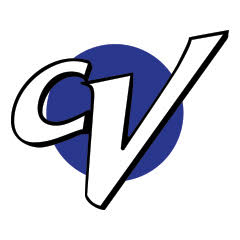by Ryan Mongan
November, 2018
Here is a race report from this last weekend. I periodically write race reports when good (or bad) things happen. Even without reviewing them, this helps me to internalize lessons so I repeat what was good and try to avoid what didn’t work.
This race is outside of Miami and I’ve gone the past three years. This year was my first time doing the Half Iron event (1.2 mile swim, 56 mile bike, 13.1 mile run). Previously I had done the Half Iron Aquabike which is the same event just minus the run.
This year the swim was a bit longer than prior years (just due to buoy placement) – at least 50 and perhaps as much as 100 yards longer. Even so, I swam it 1 minute faster than the prior year. Unfortunately the best swimmers are significantly faster than I am and were perhaps mostly dry riding their bikes when I finally got out of the water. This is nothing new as I generally have to battle back into contention after the swim. I exited in 13th place out of 57 in my division.
While I had worked on my swim leading up to the race, I had really spent some effort refining the bike. The next section gets a bit technical. So, if you aren’t into that, I’d suggest skipping ahead. Knowing that this year I would have a challenging run following the bike as opposed to the race ending after the bike, I went out trying to conserve as much energy as possible. The course was identical and the conditions (wind) were similar. Even though my perceived effort was lower, I finished the 56 miles within a handful of seconds of my time from last year. Indeed, my average heart rate was much lower – 15 beats/min lower – which is a big amount. You could chalk all that up to fitness until you look at the power numbers. Using the same power meter and head unit as last year, the average power was 19W lower than last year. Nominal power (for those into the subtleties) was 17W lower showing that there wasn’t significant amounts of zero power time that might impact average numbers. So, some of the improvement was due to fitness. But, because I’m rolling the same speed (23.5 mph average) at much lower power, a significant portion (perhaps 2/3) was due to something else. What is left, in order of importance are: aero effects, rolling resistance and drivetrain.
As for aero I had the same tires, tubes, kit, helmet and rear wheel as last year. The only changes were front wheel, frame and position. The frame was much better as it had no exposed cables, hidden brake calipers and integrated water and food storage. Position was much better as I had been working with a narrower grip and a lower head position. Also, spending more training time in the aero position allowed me to hold it much more consistently and not sit up in the wind to take a break.
For rolling resistance I mentioned that I had the same tires and tubes as the prior year. One thing I’ve changed over the last year is that I’ve become a stickler about tire pressure in races. Especially when I’m traveling, invariably I’m using someone else’s pump. I now travel with a gauge that I calibrate back to my home pump. I had decided because of the road conditions to run 90 psi in the front and 100 in the rear. When I tested the pump I borrowed, it read 7% lower than my pump meaning if I’d used its gauge; I would have pumped the tires up more than I wanted.
As for drivetrain I now use a special chain lube that is very stiff over the first 20 miles. And, after about 200 miles, chain resistance starts to creep back in. So, I track the miles on each chain to ensure I’m in the sweet spot. This might sound like a fine point – and it is. But it is the combination of lots of things that add up to big numbers.
Also this year I put down a significant amount of calories on the bike – about 900. This took the form of Lara bars (solids), isotonic gels and straight up sugar (Gatorade). This might have helped later in the bike but really came into play during the run.
I came off the bike feeling pretty good in 4th place in the division. I had ridden the fastest in my age group and the 18 fastest split of the day out of 577 racers. Now is when the pain really started. The temperature was about 88° and the sun was out. It had rained heavily just before the race. Everything was wet and the humidity must have been 80-90%. I carried a couple gels with me onto the run. I utilized every aid station pouring ice down my jersey and into my hat. The whole goal was to just keep the legs moving and not degenerate into a vicious cycle of walking. My low point was about 4 miles in when my run pace had slowed from 7:30min/mile pace to about 9:00min/mile. After that I started feeling better and the pace started coming back. Each mile felt a bit better and I averaged 8:10 for the last 3 miles. I also passed the person in front of me in those last few miles and I was able to sneak onto the podium in 3rd.
There is good news and bad news that came out of this result. The good news is that I qualified for the World Championships in Pontevedra, Spain next April. The bad news is they consider the Half Iron distance a bit too wimpy so all the distances are longer – 3km swim, 120km bike and 30km run.

